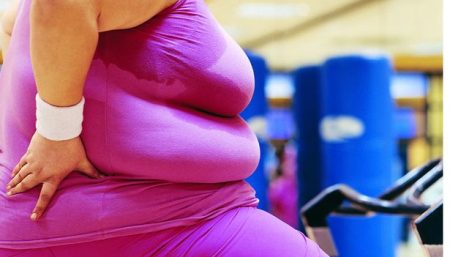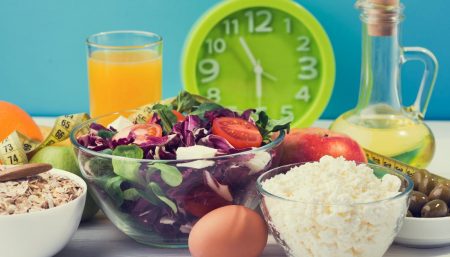To look full and cut – i.e., to display nice detail throughout your physique without having your muscles look stringy and depleted – follow our four keys to weight loss, and you’ll be shocked by how quickly you reach your goal. To make your effort truly successful, think of your body not as a temple, but as a machine that needs fuel.

One problem for the increase in body fat % with advancing age is that ‘basal fat oxidation’ – the rate at which fat is broken down inside the body tends to drop as we get older. As fat oxidation drops, more fat piles up on the hips or droops from the midsection.
Now the question arises, What can be done to prevent fat-oxidation rates from dipping? Well, the answer is,
- Try to maintain or increase muscle mass– When researchers recently studied a large group
 of healthy women, aged 18 to 73, they found that the best predictor of fat-burning decline was a loss in muscle mass not advancing age or a diminishment in aerobic capacity. In other words, losing muscle mass causes fat-burning fires to die down much more rapidly, compared with getting older or losing fitness. Women can check or even reverse the tendency for fat oxidation to decline with age simply by bolstering their muscles. Sustaining high fat-oxidation rates would then make it hard to develop a big tummy or ‘thunder thighs’ and would improve athletic performances. Take up strength training two to three times a week for 30-45 minutes. The result will be a stronger, leaner you.
of healthy women, aged 18 to 73, they found that the best predictor of fat-burning decline was a loss in muscle mass not advancing age or a diminishment in aerobic capacity. In other words, losing muscle mass causes fat-burning fires to die down much more rapidly, compared with getting older or losing fitness. Women can check or even reverse the tendency for fat oxidation to decline with age simply by bolstering their muscles. Sustaining high fat-oxidation rates would then make it hard to develop a big tummy or ‘thunder thighs’ and would improve athletic performances. Take up strength training two to three times a week for 30-45 minutes. The result will be a stronger, leaner you.
- Eat small meals often throughout the day– To get truly lean, even ripped, in a minimal amount of time, eating smaller meals more often throughout your day is a much more effective method. Spacing your meals every 2 1/2 to three hours provides a number of metabolism-enhancing benefits like : Improved appetite control, Better glycogen storage in the liver and muscle tissues, Adequate nutrient stores to meet the body’s momentary nutritional demands & Improved gastrointestinal transit time. You should eat whether you feel hungry or not. Hunger signals a deficit of nutrients, and you always want to stay ahead of the curve.
- Boost your carbohydrate intake – Don’t rely strictly on baked potatoes or white rice. Eat yams and sweet potatoes, brown rice and assorted grains (they burn longer); pack down tons of salads and vegetables (they require more energy to process than they contain). To keep your system working optimally – that is, to keep it guessing – don’t get caught in a carb rut. To keep the body working and guessing, take in the usual amount of carbs your diet calls for on day one; on the next day, drop carb intake by 250 calories (62.5 grams), on day three, increase carbs over your daily level by 250 calories, return to your standard intake on day four. For an additional surprise to your metabolism, drop your carb intake by 500 calories every now and then. This will prevent your body going into a state of homeostasis.
- Fan your aerobic furnace- by varying the intensity of your aerobic workouts. After a good warm-up, incorporate a few short bursts of speed to take your heart rate up a little higher for a minute or two. Then slow down and recover at your normal pace. Interval training adds variety, helps burn more calories and increases your cardiovascular fitness level.
- Stay hydrated – Muscle tissue is 70 percent water. So if you want to get lean and hard, drink plenty of H2O. Water is essential for protein conversion and carbohydrate uptake; the chemical conversion of carbs to energy cannot take place efficiently without ample water. You can’t load muscle cells with glycogen or deliver amino acids to muscle tissue without adequate water. More important, fat, the vast majority of which is stored under the skin, is mobilized through a process called hydrolysis. As the word suggests, hydrolysis requires plenty of water – meaning that insufficient amounts of [H.sub.2]O in your body will hinder effective breakdown of fat.
- Get enough protein each day– One way to minimize muscle loss is to get enough protein delivered in relatively precise doses throughout the course of each day. To estimate the amount of protein you should consume every day use the weight at which you think you would look good if you were lean (be realistic!), then multiply that number by 0.8 grams. If that number is, say, 170 pounds, your daily requirement is 136 grams of protein, which translates to 27 grams of protein per meal.Stop dieting- Statistics show that dieting has both physical and psychological consequences. Starvation is a sign for the body to preserve fat. Rigid food restriction is known to prompt binge eating in
 previously normal eaters.
previously normal eaters.
- Change-up the workout routine – The same fitness routine, week after week, has the
potential to lead to burnout and boredom. Physiologically, your body needs change as well to avoid exercise plateaus and diminishing results. Change your workout routine a little after 4-6 weeks. This might mean changing the type of activities youre doing, the order of your exercises, or the intensity and duration of your workouts.
Go about adding these tips to keep your fat furnace working.
Disclaimer
The Content is not intended to be a substitute for professional medical advice, diagnosis, or treatment. Always seek the advice of your physician or other qualified health provider with any questions you may have regarding a medical condition.



